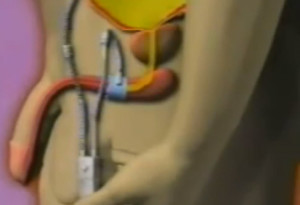 Male incontinence is rarely life-threatening, but it often hampers a normal lifestyle. It may result in damp undergarments, skin rashes, skin irritation, limited physical activity, reduced social contacts and relationships, and even male impotence or diminished interest in sex. The urologists at St Pete Urology can prescribe one of many different treatments for male incontinence, including medications, biofeedback techniques and exercise programs. However, for patients who do not respond to these treatments, the surgical implantation of an artificial sphincter is the best option. Urologists will carefully evaluate the patient before recommending an artificial sphincter.
Male incontinence is rarely life-threatening, but it often hampers a normal lifestyle. It may result in damp undergarments, skin rashes, skin irritation, limited physical activity, reduced social contacts and relationships, and even male impotence or diminished interest in sex. The urologists at St Pete Urology can prescribe one of many different treatments for male incontinence, including medications, biofeedback techniques and exercise programs. However, for patients who do not respond to these treatments, the surgical implantation of an artificial sphincter is the best option. Urologists will carefully evaluate the patient before recommending an artificial sphincter.
Qualifications for Artificial Sphincter Implantation
Artificial sphincter implantation is the best treatment option for patients with bladders that are too large to hold urine in between normal urinating times. Patients who do not respond to biofeedback and drugs, especially after prostate surgery, are common candidates for an artificial sphincter. However, the bladder must usually be neurologically intact and not contracting regularly, and experiencing pressure that requires frequent urination. Candidates must also have infection-free bladders and be capable of completely emptying their bladder prior to sphincter implantation.
Effectiveness of Artificial Sphincters
The many cases of artificial sphincter implantation that have been recorded indicate high success rates and have enabled patients to regain continence and stay dry. For instance, studies have shown that artificial sphincters remain 100% effective in 90% of cases five years after surgery. After five years, a few cases of reduced effectiveness have been recorded and found to result from gradual wear of tissues below the sphincter cuffs.
How the Sphincter Implantation Is Done
 Artificial sphincters are devices made of plastic materials and consist of inflatable cuffs, water-holding reservoirs and inflation control pumps. The surgical procedure is usually initiated by making a 2 to 3-inch cut into the scrotum or into the area between the rectum and scrotum. After the pelvis is entered, a 2-inch section is marked out in the area where the urethra enters the bladder and a donut-shaped cuff is inserted therein. The cuff is usually attached to a pumping system placed in the scrotum, which is in turn connected to a 25cc reservoir containing salt-water. It is the reservoir that acts as a sphincter. Surgeons at St Pete Urology often complete the surgical implantation in one hour, but the patient will stay in the hospital for 24 hours. For more information about artificial sphincters, visit or call St Pete Urology in St Petersburg, Florida.
Artificial sphincters are devices made of plastic materials and consist of inflatable cuffs, water-holding reservoirs and inflation control pumps. The surgical procedure is usually initiated by making a 2 to 3-inch cut into the scrotum or into the area between the rectum and scrotum. After the pelvis is entered, a 2-inch section is marked out in the area where the urethra enters the bladder and a donut-shaped cuff is inserted therein. The cuff is usually attached to a pumping system placed in the scrotum, which is in turn connected to a 25cc reservoir containing salt-water. It is the reservoir that acts as a sphincter. Surgeons at St Pete Urology often complete the surgical implantation in one hour, but the patient will stay in the hospital for 24 hours. For more information about artificial sphincters, visit or call St Pete Urology in St Petersburg, Florida.
